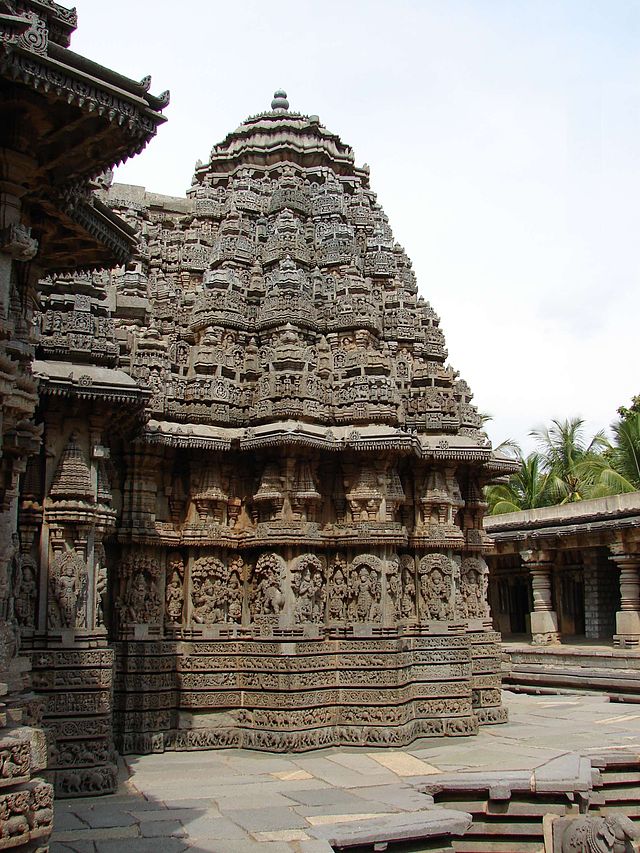The early accounts of Coorg are purely legendary, and it was not till the 9th and 10th centuries that its history became the subject of authentic record. At this period, according to inscriptions, the country was ruled by the Gangas of Talakad, under whom the Changalvas, kings of Changa-nad, styled later kings of Nanjarayapatna or Nanjarajapatna, held the east and part of the north of Coorg, together with the Hunsur talk in Mysore.

image courtesy: wikipedia
After the overthrow, in the 11th century, of the Ganga power by the Cholas, the Changalvas became tributary to the latter.
When the Cholas in their turn were driven from the Mysore country by the Hoysalas, in the 12th century, the Changalvas held out for independence; but after a severe struggle they were subdued and became vassals of the Hoysala kings. In the 14th century, after the fall of the Hoysala rule, they passed under the supremacy of the Vijayanagar empire.
During this period, at the beginning of the 16th century, Nanja Raja founded the new Changalva capital Nanjarajapatna. In 1589 Piriya Raja or Rudragana rebuilt Singapatna and renamed it Piriyapatna (Periapatam). The power of the Vijayanagar empire had, however, been broken in 1565 by the Mahommedans; in 1610 the Vijayanagar viceroy of Seringapatam was ousted by the raja of Mysore, who in 1644 captured Piriyapatna. Vira Raja, the last of the Changalva kings, fell in the defence of his capital, after putting to death his wives and children.
Coorg, however, was not absorbed in Mysore, which was hard pressed by other enemies, and a prince of the Ikkri or Bednur family (perhaps related to the Changalvas) succeeded in bringing the whole country under his sway, his descendants continuing to be rajas of Coorg till 1834. The capital was removed in 1681 by Muddu Raja to Madikeri or Mercara. In 1770 a disputed succession led to the intervention of Hyder Ali of Mysore in favor of Linga Raja, who had fled to him for help, and whom he placed on the throne on his consenting to cede certain territories and to pay tribute.
ViraRaja,who, in consequence of his mind becoming unhinged, was guilty towards the end of his reign of hideous atrocities, died in 1809 without male heirs, leaving his favorite daughter Devammji as rani.
His brother Linga Raja, however, after acting as regent for his niece, announced in 1811 ,his own assumption of the government.
He died in 1820, and was succeeded by his son Vira Raja, a youth of twenty, and a monster of sensuality and cruelty.
Among his victims were all the members of the families of his predecessors, including Devammji.

Image Courtesy: wikipedia
A British force marched into Coorg in 1834, On the 11th of April the raja was deposed by Colonel Fraser, the political agent with the force, and on the 7th of May the state was formally annexed to the East India Companys territory.
In 1852 the raja, who had been deported to Vellore, obtained leave to visit England with his favorite daughter Gauramma, to whom he wished to give a European education. On the 3oth of June she was baptized, Queen Victoria being one of her sponsors; she afterwards married a British officer who, after her death in 1864, mysteriously disappeared together with their child. Vira Raja himself died in 1863, and was buried in Kensal Green cemetery.